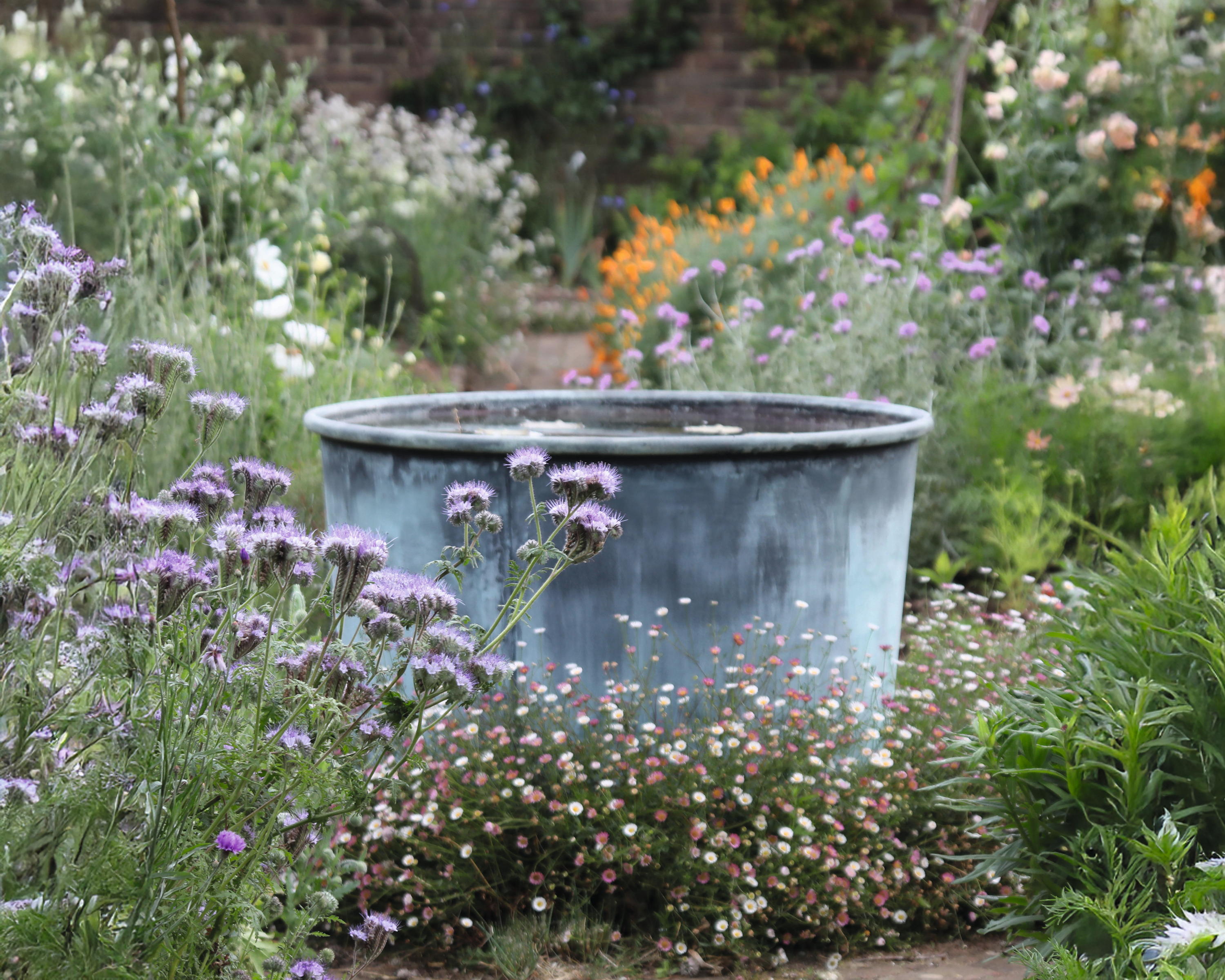Great British Garden Makers: Sir Reginald Blomfield (1856-1942)
Sir Reginald Blomfield’s reputation as an exponent of the art of formal garden design is well documented


Sir Reginald Blomfield's reputation as a garden-maker rests largely on The Formal Garden in England, a scholarly and readable book with illustrations by F. Inigo Thomas. However, it is impossible to write of Blomfield without referring to William Robinson, an Irish horticultural journalist who founded The Garden magazine in 1871 and used it to propagate his own, rather colourful, opinions. (Robinson had been preaching a more ‘natural' style of gardening for some time; his promotion of wild and woodland gardening led to increasingly shrill tirades against the more florid sort of Italianate garden laid out by such garden-makers as Sir Charles Barry).
Blomfield was a marvellous writer, and the success of his book brought him immediate renown and many commissions to his practice. He ridiculed Robin-son's arguments, making it clear that only the architect had the intellectual capacity to design a garden-it was the gardener's job to rake the gravel and grow the gooseberries.
Garden historians have revelled in the debate that exploded between the irascible Robinson and the genial but combative Blomfield. Given his superb intellect and power of words, Blomfield undoubtedly got the better of the argument, but public sympathy lay largely with Robinson's naturalistic ideas.
There were two main outcomes, both rather surprising. The first was the emergence of the modern English style of garden-making, a compromise that combined the formal structure advocated by Blomfield with the informal planting championed by Robinson. Gertrude Jekyll is perhaps the best known of its early exponents, and she worked very closely with Edwin Lutyens, who was decidedly in the Blomfield camp. The second result was that Robinson invited Blomfield to visit him at Gravetye Manor in Sussex and the two of them got on rather well together.
Blomfield summed up the controversy thus: ‘The gardeners said the architects knew nothing about gardening, and the architects said the gardeners knew nothing about design, and there was a good deal of truth on both sides.' In fact, Blomfield was the first to admit that sites exist that ‘make a purely formal garden out of the question'.
His own garden at Point Hill was an example: the house was built on the edge of a cliff overlooking the marshes at Rye in Sussex, and the garden was so near-vertical that it could only be reached by ledge-like paths. A mutual friend recounted that Gertrude Jekyll ‘used to relate with great glee the fact that Robinson designed himself a garden all squares [at Gravetye], and Reggy [Blomfield] a garden on a cliff with not a straight line in it'.
1856 Reginald Theodore Blomfield was born at Nymet Tracey in Devon on December 20, 1856, the son of a clergyman and grandson of a bishop, and was educated at Haileybury and Exeter College, Oxford.
Sign up for the Country Life Newsletter
Exquisite houses, the beauty of Nature, and how to get the most from your life, straight to your inbox.
1870s His first-class degree in Classical Greats would have qualified him for a high-flying career in public service, but he chose to take up articles with his architect uncle Sir Arthur Blomfield in 1881. He also studied at the Royal Academy, where he won both the junior and senior prizes for his designs.
1884 He set up as an architect in 1884, and his early years in practice were influenced by the Arts-and-Crafts movement. Blomfield proved to be an immensely gifted and successful architect, whose enthusiasm for excellence spilled over into gardens.
1892 His first book The Formal Garden in England is published, offering a civil-ised riposte to the back-to-nature tendencies of William Robinson. ‘We protest entirely against the view that there is one art of the house and another of the garden,' Blomfield declared. ‘They rest on the same principles and aim at a common end.'
1900 During Blomfield's first 30 years of practice, he received a large number of commissions for country houses, which often also involved designing the garden. He laid out the formal gardens at Godinton Park in Kent in 1902. These include a large Baroque fish-pond (almost a lake), magnificent yew hedges and a topiary garden with a statue of Pan at the centre.
1909 One of Blomfield's largest commissions was to design a formal garden for Mellerstain in the Borders. The house has extensive views south to the Cheviots and was built by the Adams (father and son) between 1725 and 1778. Blomfield's solution to the steep site was to create three huge balustraded terraces that descend towards the lake at the bottom; as a way of grounding the house and linking it to the majestic setting, his design could not be bettered. Even today, its beauty and grandeur make visitors gasp.
1914 Blomfield was asked to lay out a period garden for Sulgrave Manor in Northamptonshire (the importance of this property was that it belonged to George Washington's ancestors). He obliged with a small, simple, formal design in the late-17th-century style. The elements-all in scale with the modest house-include a rose garden, a lavender border, a flower garden, a bowling (right) green and thick hedges of close-clipped yew. It is such a perfect complement to the house that many visitors today believe it to be the actual garden known to America's first president.
1919 Blomfield's practice wound down after the First World War, but he served on a large number of public bodies, including the War Memorials Com-mittee. He was knighted in 1919. His public commissions in the 1920s include the monumental Menin Gate at Ypres.
1942 He died on December 27, 1942.
Country Life is unlike any other magazine: the only glossy weekly on the newsstand and the only magazine that has been guest-edited by HRH The King not once, but twice. It is a celebration of modern rural life and all its diverse joys and pleasures — that was first published in Queen Victoria's Diamond Jubilee year. Our eclectic mixture of witty and informative content — from the most up-to-date property news and commentary and a coveted glimpse inside some of the UK's best houses and gardens, to gardening, the arts and interior design, written by experts in their field — still cannot be found in print or online, anywhere else.
-
 The most picturesque town in Scotland, and did someone survive a fall from 33,333ft? Country Life Quiz of the Day, May 14, 2025
The most picturesque town in Scotland, and did someone survive a fall from 33,333ft? Country Life Quiz of the Day, May 14, 2025Wednesday's quiz brings a very tall tale to the table.
-
 Four stands not to miss at the Chelsea Flower Show
Four stands not to miss at the Chelsea Flower ShowFrom wire sculptures to water features, oil paintings to tableware, take inspiration from the exhibitors at this year’s RHS Chelsea Flower Show and liven up your home and garden, just in time for a–hopefully–glorious summer.